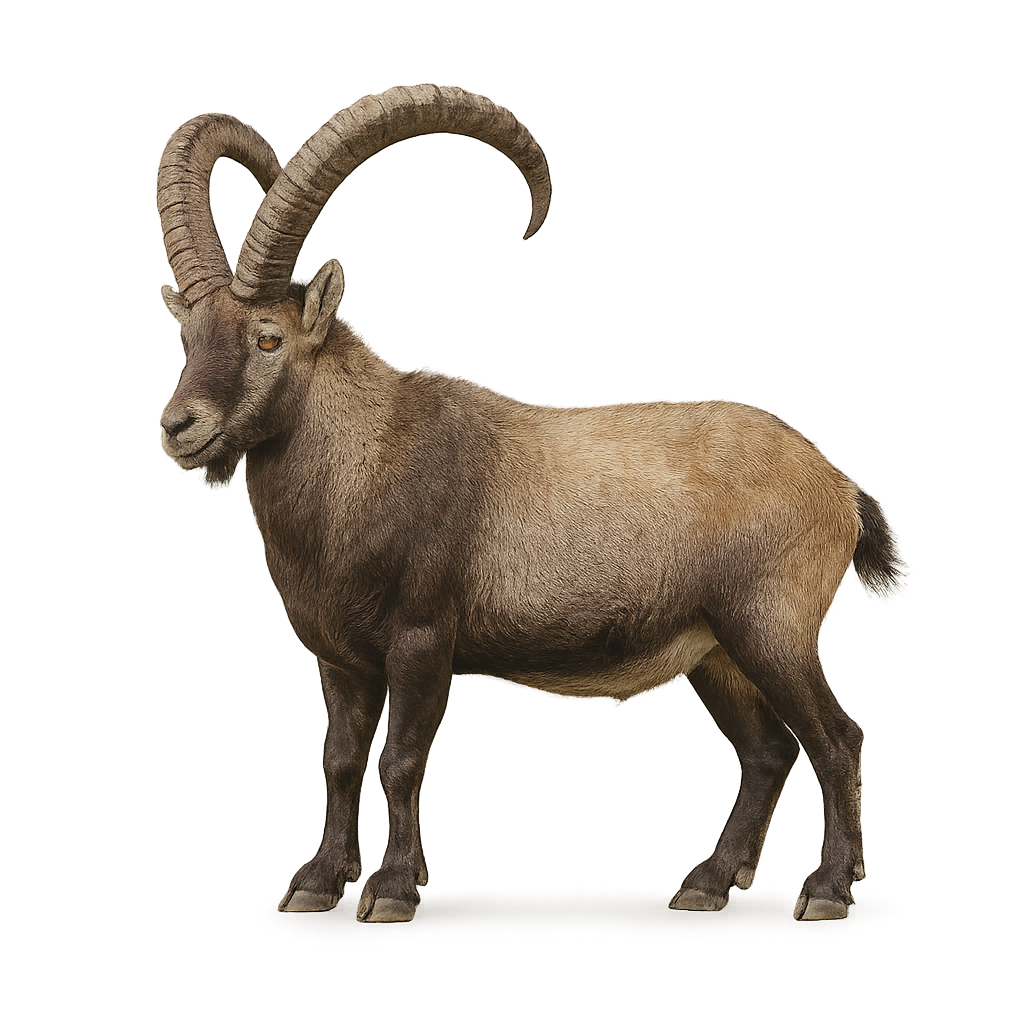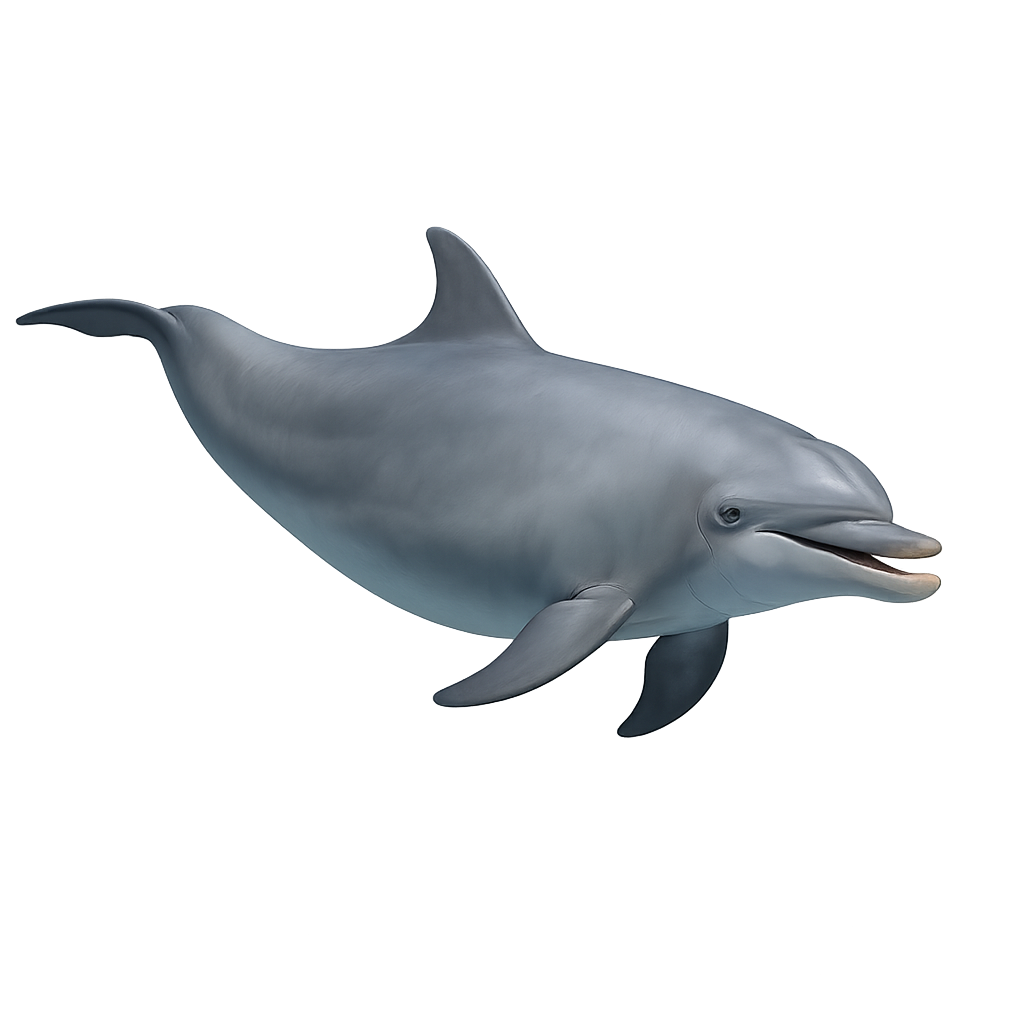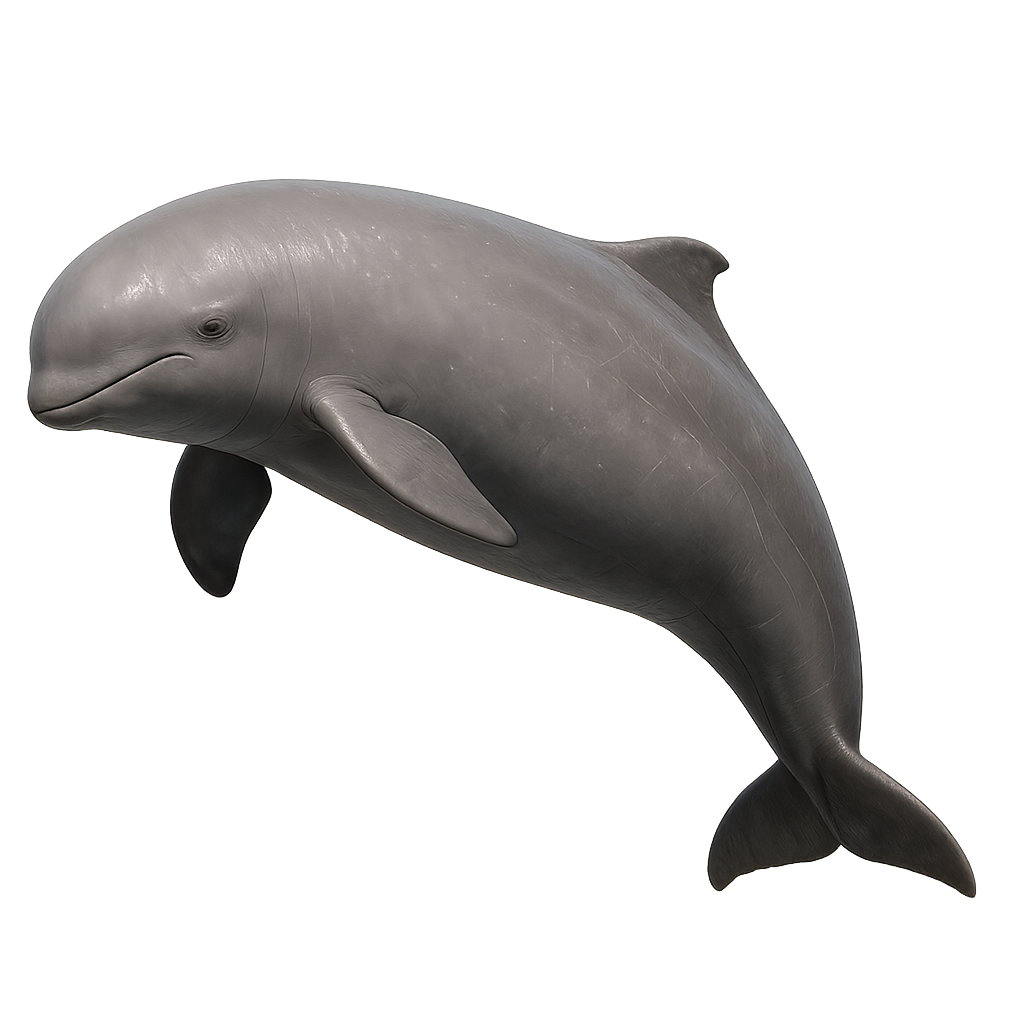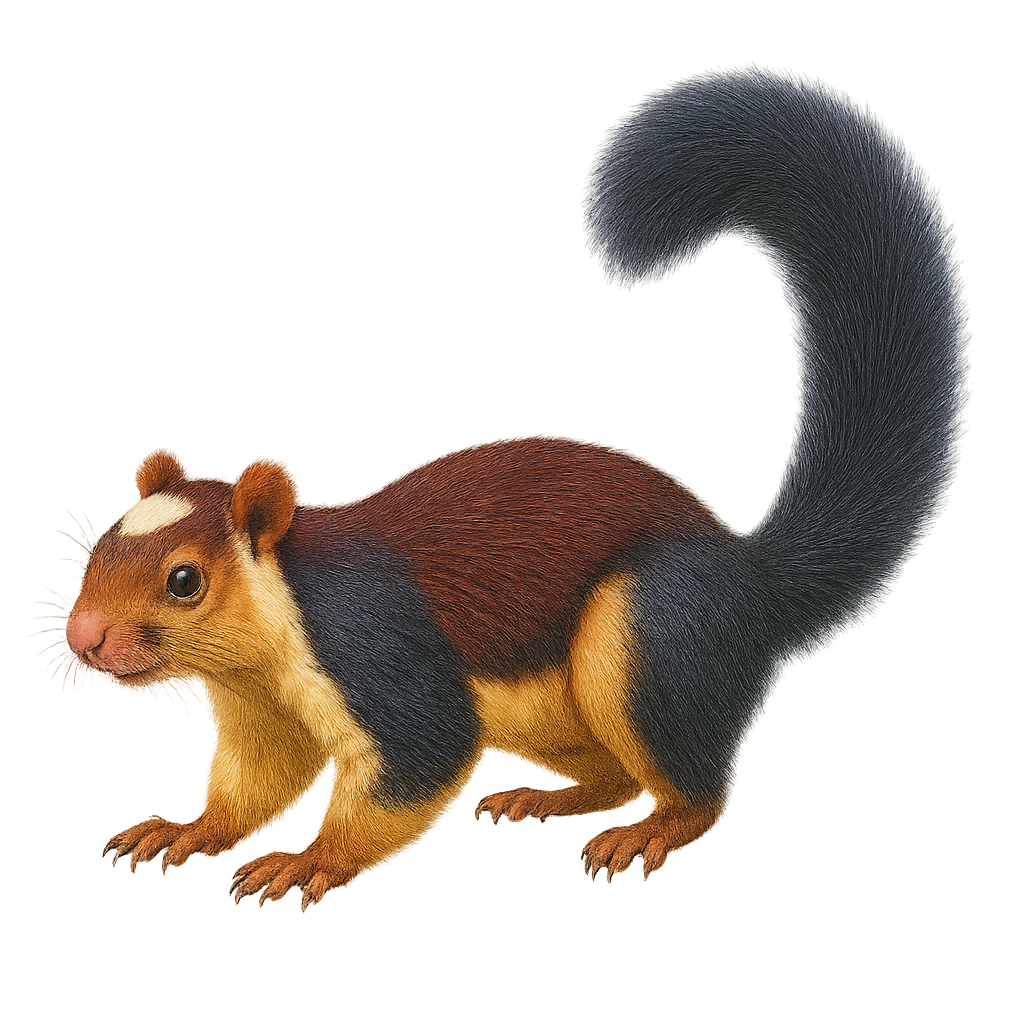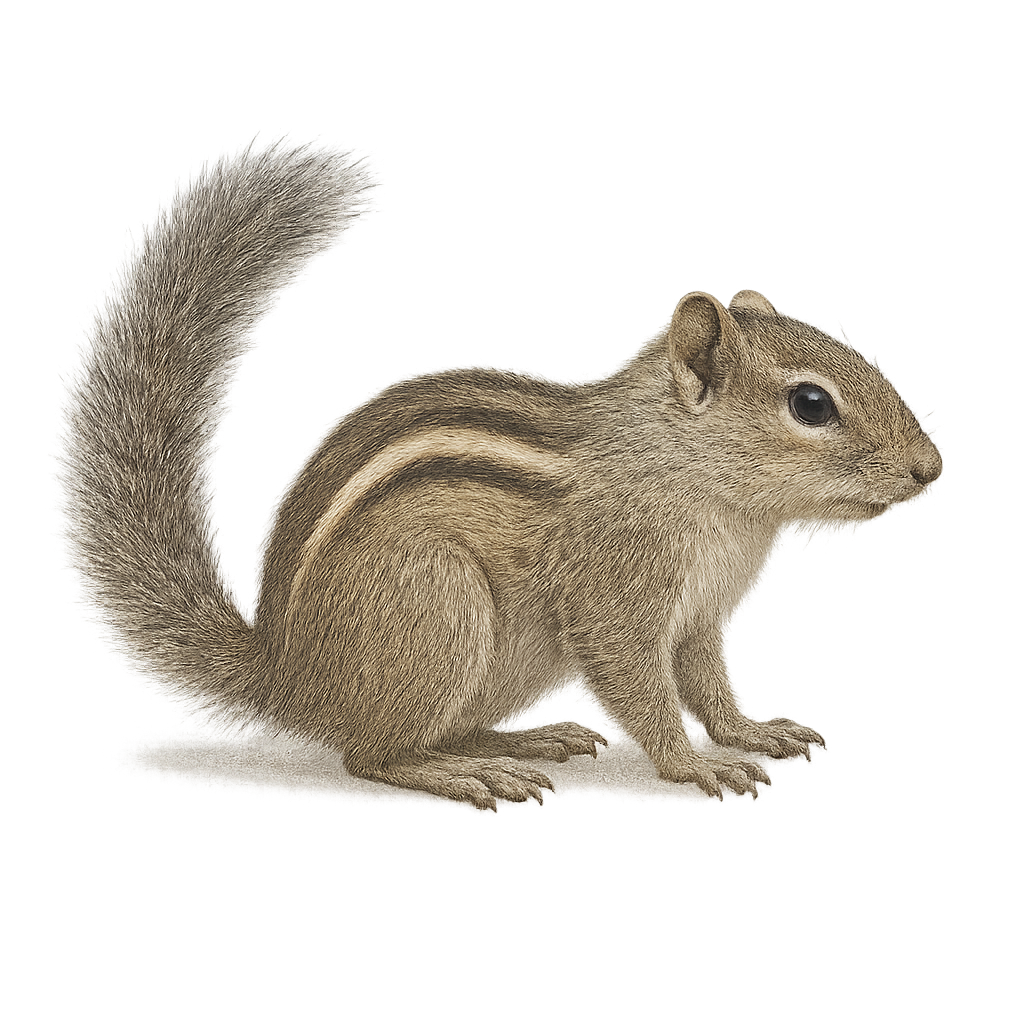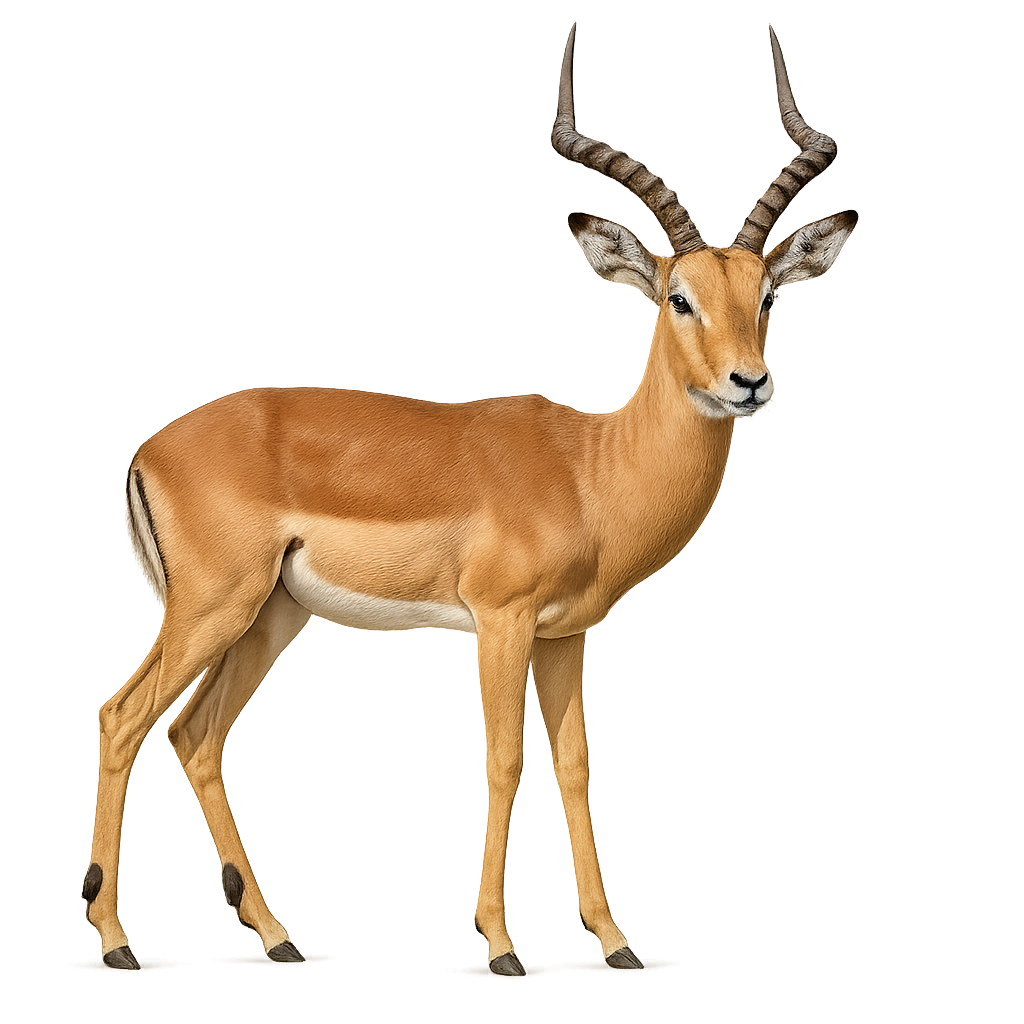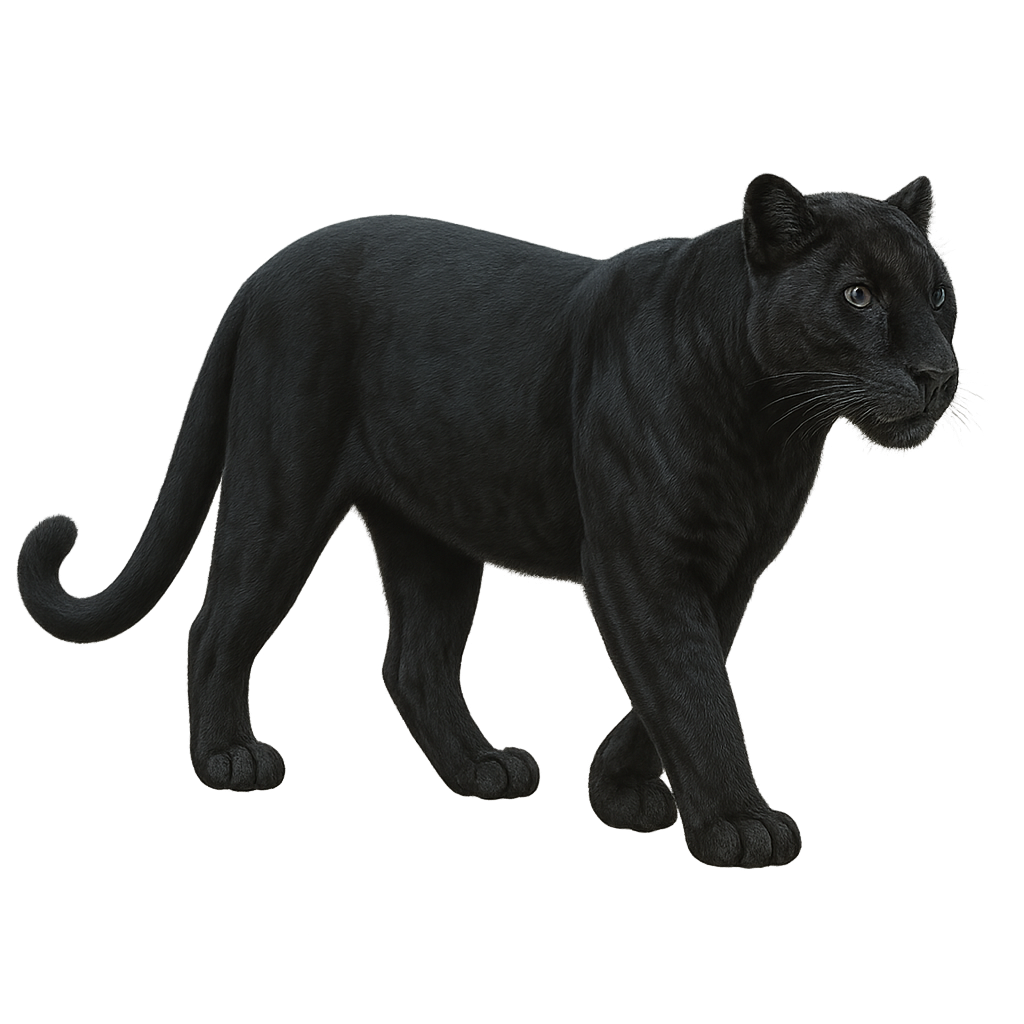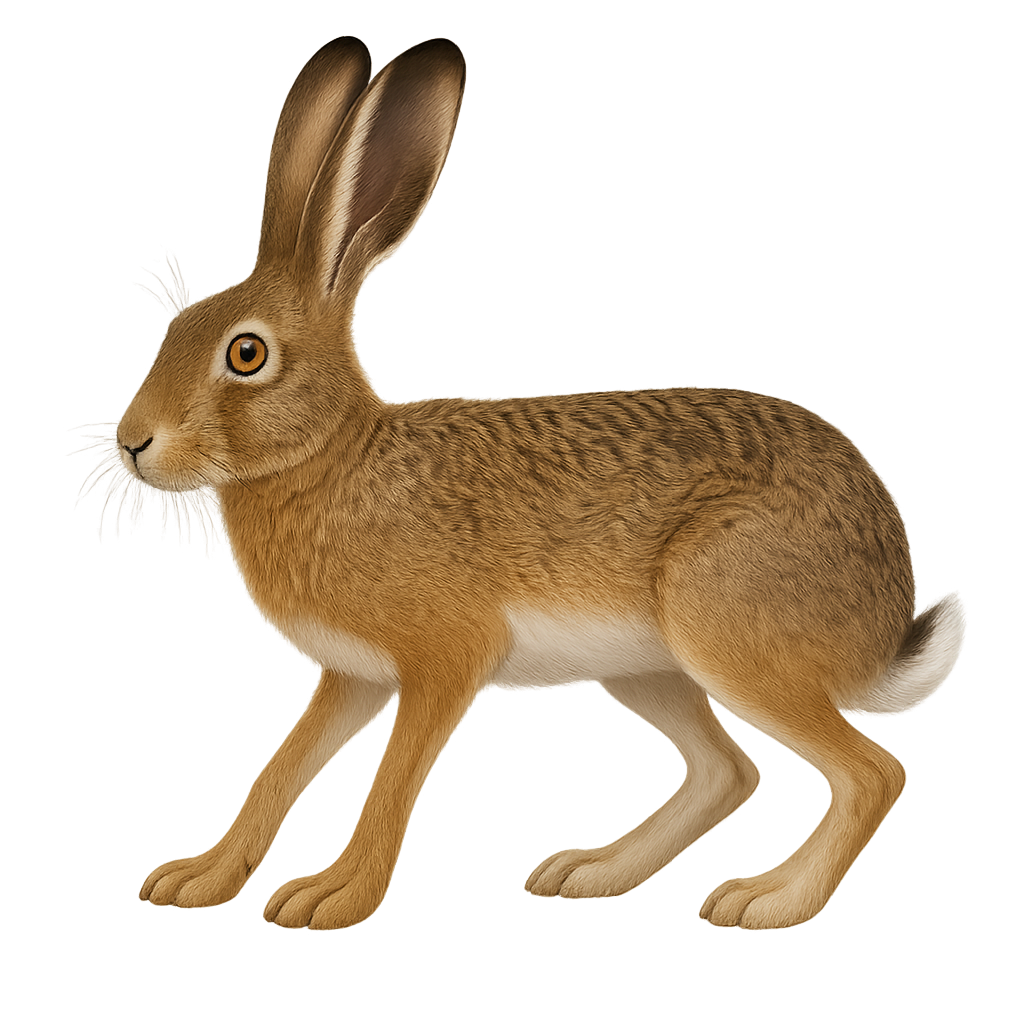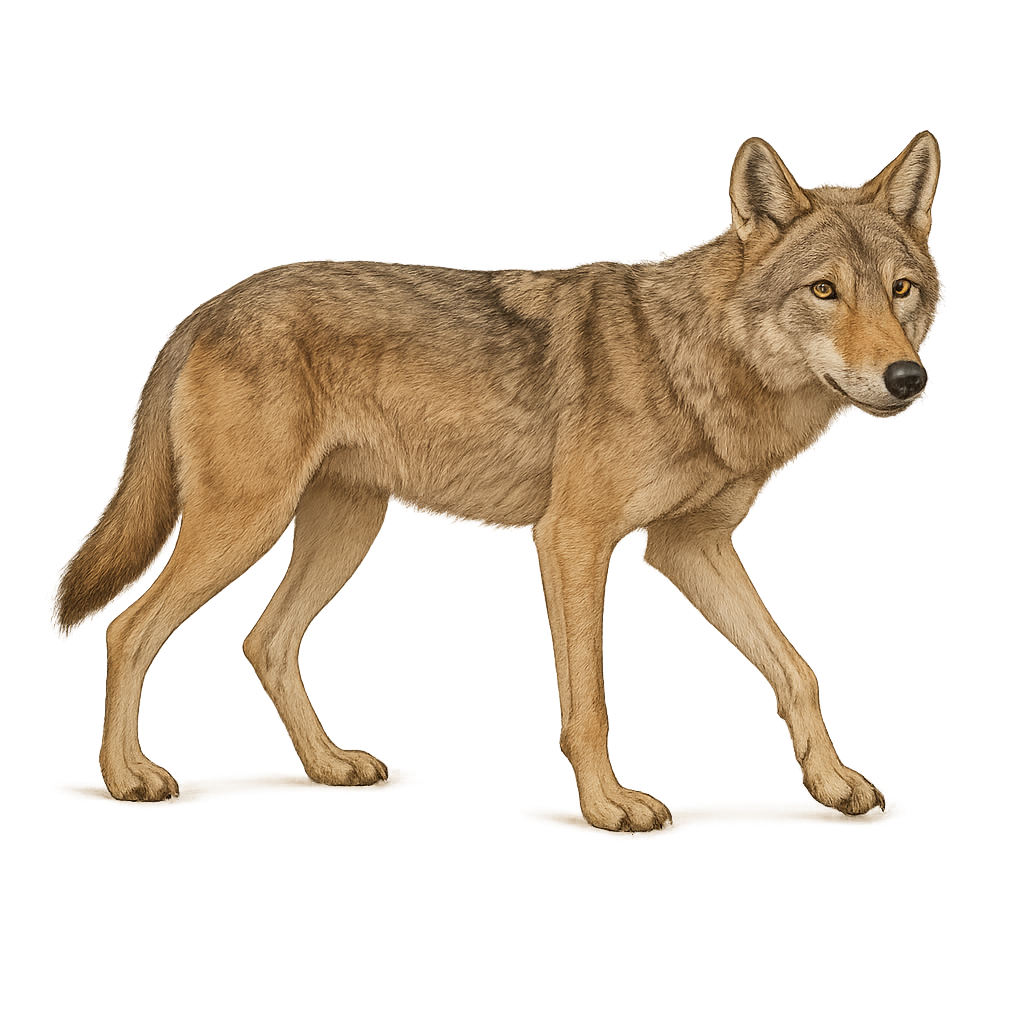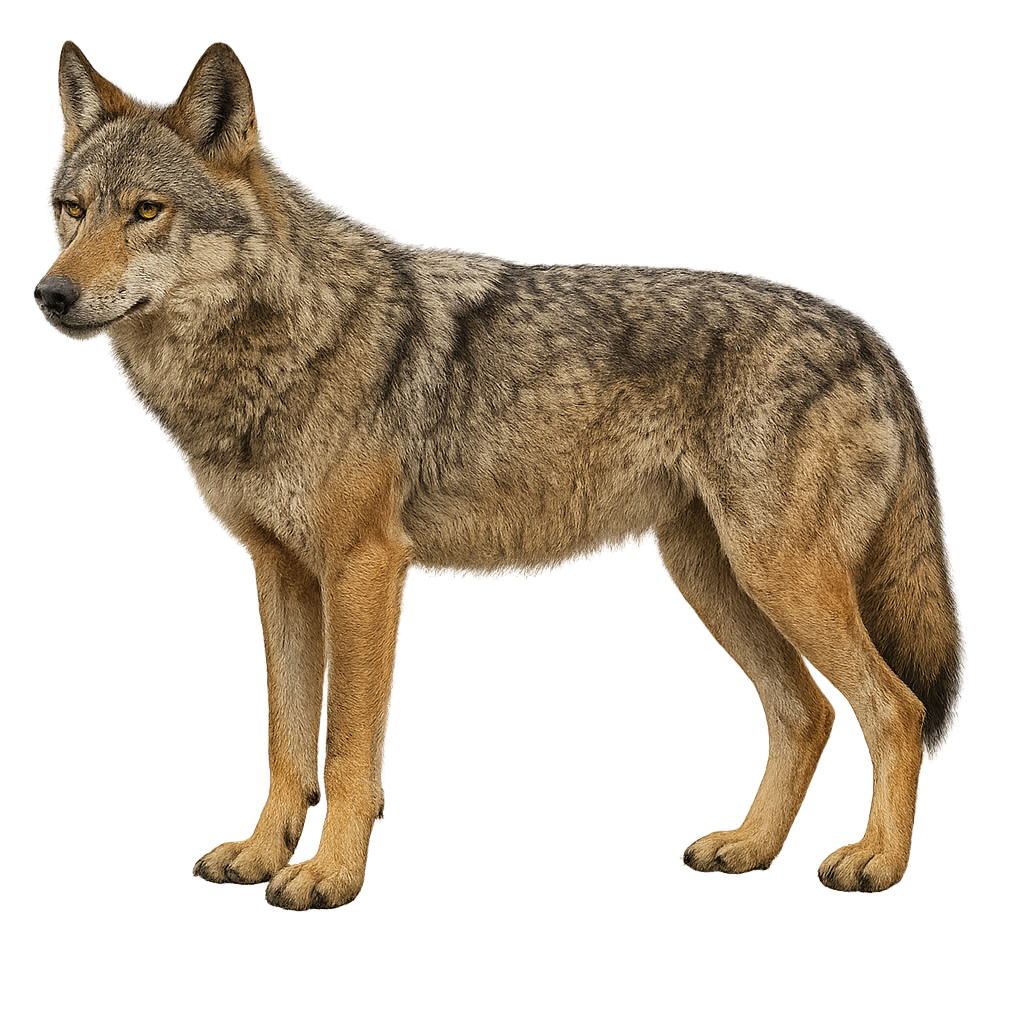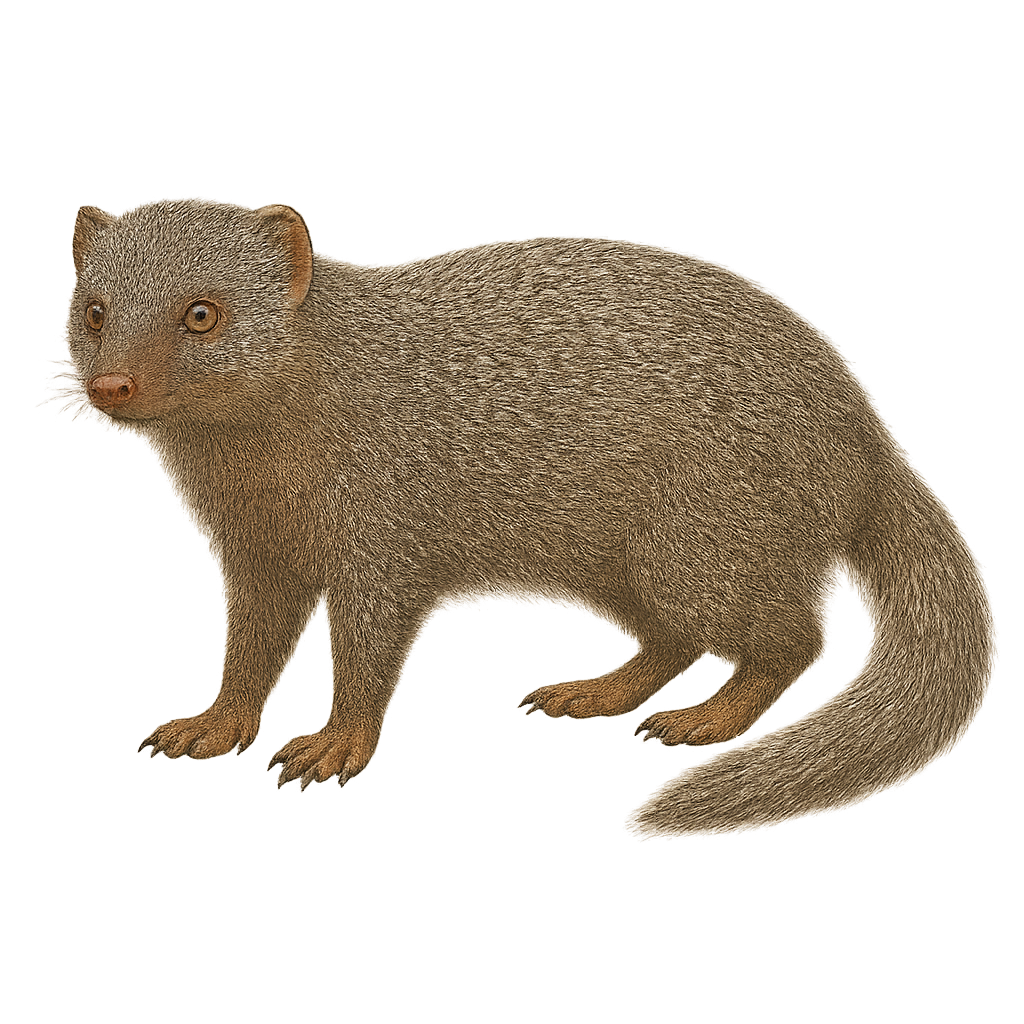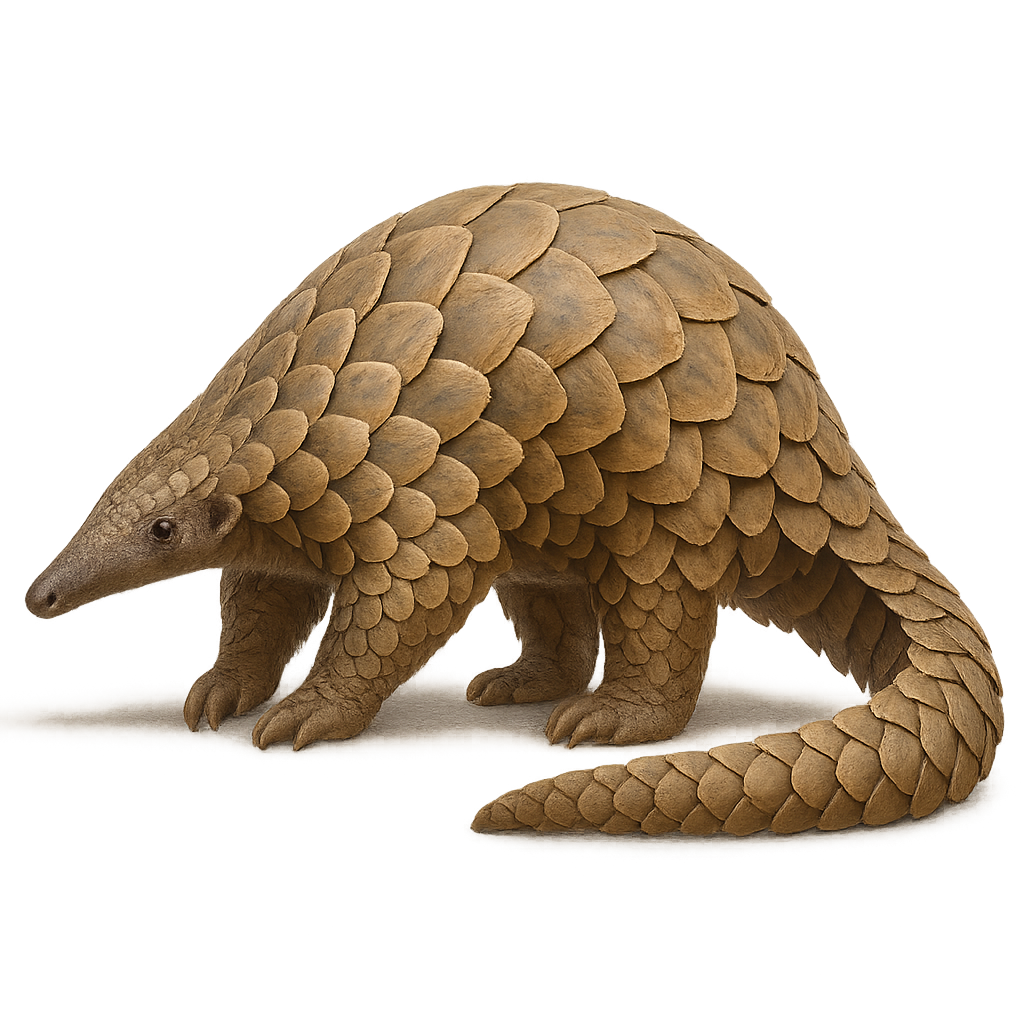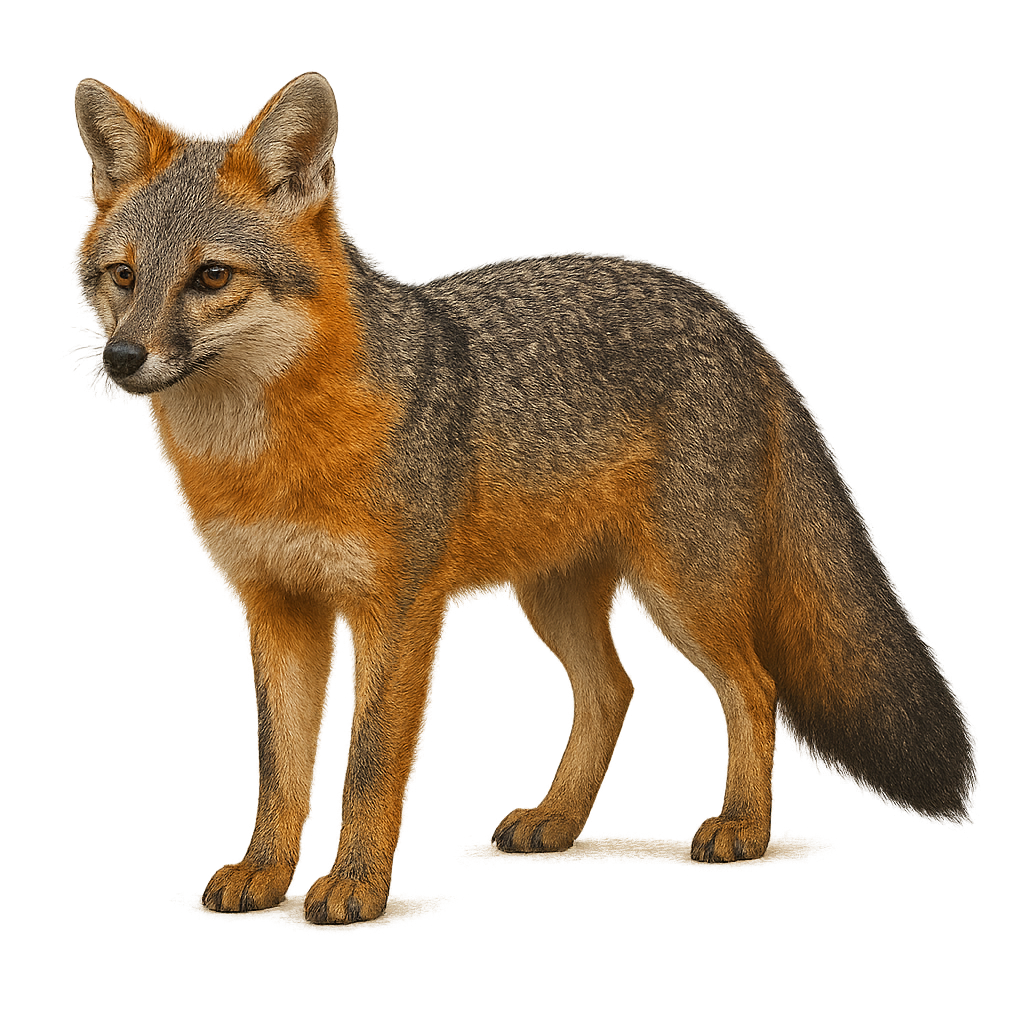The Iberian Ibex is a large herbivore native to the mountains of the Iberian Peninsula, primarily in the mountain ranges of the Pyrenees and the Sierra de Gredos in Spain. It is easily recognizable by its massive, backward-curved horns and brown and gray coat. This ibex lives in rocky, steep terrain, where it feeds mainly on grasses, woody plants, and alpine vegetation.
The Iberian Ibex is a social animal that forms family groups consisting of females and young, while adult males, called "ibex," form separate groups. The species nearly went extinct in the 20th century due to overhunting, but thanks to conservation efforts, its population has been restored in several regions of Spain. However, the Iberian Ibex remains vulnerable to habitat loss and human disturbances.
The Indo-Pacific bottlenose dolphin measures 2–3 m and weighs 150–230 kg, with a light grey streamlined body and a short beak. It forms small coastal groups in shallow tropical and subtropical waters, feeding on fish, cephalopods and crustaceans. Highly social and playful, it often interacts with boats, performing spectacular leaps and bow-riding.
The Irrawaddy dolphin, Orcaella brevirostris, is a freshwater and coastal cetacean known for its rounded forehead and lack of a distinct beak. It typically measures between 2 and 2.7 meters and weighs up to 150 kg. Its skin is light gray with a paler belly. This dolphin is often seen in small groups and is noted for its social and curious behavior. It can swim in both freshwater and saltwater, frequenting estuaries, rivers, and coasts. Unfortunately, it is threatened by habitat degradation, accidental capture in fishing nets, and pollution. Its conservation is crucial to maintaining the balance of the aquatic ecosystems it inhabits.
The Indian Giant Squirrel, Ratufa indica, is an impressive rodent known for its size and vibrant colors. It can grow up to a meter long, including its tail, and sports a coat with varying shades from brown to black, with hints of cream and rust. This squirrel is arboreal, spending most of its time in the trees of India's tropical rainforests. It primarily feeds on fruits but also consumes flowers, bark, and insects. Its behavior is generally solitary, although it can be seen in pairs during the breeding season. With its long tail, it maintains perfect balance when leaping from tree to tree.
The Indian palm squirrel, scientifically known as Funambulus palmarum, is a small rodent native to the Indian subcontinent. It is easily identifiable by its three distinct white stripes running along its back, contrasting with its grey-brown fur. These squirrels are primarily arboreal and are often found in gardens, parks, and wooded areas. They are diurnal and spend most of their day foraging for food, mainly feeding on fruits, nuts, and occasionally insects. Their behavior is generally not very shy, making them quite visible in urban areas. Although often solitary, they can be seen in small groups, especially during the breeding season.
The Impala is a medium-sized, slender, and graceful antelope, easily recognizable by its elegant, curved horns and its light brown to reddish coat, with a white belly and tail. It stands about 70 to 90 cm at the shoulder, with a total length of 1.2 to 2 meters, and weighs between 40 and 75 kg. Males have long, fine, lyre-shaped horns that can reach up to 90 cm in length, while females, which lack horns, are generally smaller. The Impala primarily inhabits savannas and woodland grasslands in East and Southern Africa, where it forms complex social groups. It primarily feeds on grass, but may also eat leaves and fruits when grass is less abundant. The Impala is an excellent runner, capable of making long leaps to escape its predators. Although the Impala is quite widespread, it is vulnerable to habitat loss and excessive hunting.
The Indri is one of the largest lemurs in Madagascar, known for its piercing call that echoes through the forest. With its thick fur and long arms, it primarily inhabits the tropical forests of eastern Madagascar. The Indri feeds mainly on leaves, fruits, and flowers, and remains loyal to a small territory which it defends with its songs. Due to deforestation and poaching, the Indri is critically endangered.
The Indian leopard is a striking big cat with a golden coat covered in black rosettes. Highly adaptable, it inhabits a wide range of environments—from forests and hills to open plains and even areas near cities across India. Mostly nocturnal and solitary, it preys on a variety of animals. Within this subspecies, melanistic individuals—known as black panthers—do exist. These leopards have a genetic mutation that gives them an entirely black appearance. While rare, black leopards are regularly observed in certain regions, particularly in the humid forests of the Western Ghats.
The Iberian Hare is a rodent endemic to the Iberian Peninsula, primarily found in Spain and Portugal. It measures between 50 and 60 cm in length, with a tail of 6 to 9 cm, and weighs between 2 and 3 kg. This hare is smaller than its European cousin, with a lighter coat, often gray-brown or light brown, with darker markings on the back and a paler hue on the belly. The Iberian Hare primarily inhabits open plains, oak forests, and meadows, where it feeds on vegetation, mainly grasses, roots, leaves, and sometimes young shrub shoots. It is a crepuscular and nocturnal animal, most active at dusk and during the night. While the species is not immediately endangered, it is threatened by habitat loss, hunting, and the introduction of predators such as foxes and dogs.
The Canis lupus pallipes, commonly known as the Indian wolf, is a subspecies of the gray wolf found primarily in the semi-arid regions of India and Pakistan. This medium-sized wolf is characterized by its lighter and shorter coat, adapted to hot climates. It typically lives in small packs and preys on a variety of animals, from small mammals to birds. Although an efficient predator, it is threatened by habitat loss and human conflict. Its adaptability to various environments demonstrates its resilience, yet its population remains vulnerable.
The Italian wolf, or Canis lupus italicus, is a subspecies of the gray wolf, mainly found in the Apennines and Italian Alps. It is characterized by its medium size, dense coat, and color ranging from gray to brown. This predator plays a crucial role in the ecosystem by regulating ungulate populations. Although it was threatened with extinction in the 20th century, conservation efforts have led to an increase in its population. The Italian wolf lives in packs, with a well-defined social hierarchy. It is primarily nocturnal and crepuscular, hunting in groups to optimize its chances of success. Its communication relies on vocalizations, visual, and olfactory signals.
The Iberian Lynx is a medium-sized cat endemic to the Iberian Peninsula, primarily found in southern Spain and Portugal. It measures about 80 to 100 cm in length, with a tail of about 10 to 15 cm, and weighs between 8 and 14 kg, with males generally being larger than females. Its coat is pale beige to light brown, with darker spots on the back and flanks, and a lighter underside. It has pointed ears, adorned with tufts of black fur, and a small beard on its chin. The Iberian Lynx primarily inhabits wooded and semi-desert areas, where it hunts prey such as hares, birds, and especially ungulates like deer and rabbits, which are its main food source. This solitary predator is highly territorial and uses calls and claw marks to demarcate its territory. Although it is one of the most endangered cats in the world, conservation efforts have helped increase its population, but it remains vulnerable to habitat loss and the decline of its natural prey.
The Indian Brown Mongoose, Herpestes fuscus, is a small carnivorous mammal native to the Indian subcontinent. It is characterized by its dark brown fur and slender body. Measuring about 50 to 60 cm in length, it has a bushy tail that accounts for nearly half of its total length. This species is primarily terrestrial and feeds on small animals, insects, and occasionally fruits. It is known for its ability to hunt snakes due to its agility and speed. The brown mongoose typically inhabits a variety of environments, from tropical forests to shrublands. Although often solitary, it can sometimes be seen in small family groups.
The Indian grey mongoose, Herpestes edwardsii, is a small carnivorous mammal native to the Indian subcontinent. It is recognizable by its grayish fur and bushy tail. Measuring between 36 and 45 cm, it typically weighs between 0.9 and 1.7 kg. Agile and fast, it is famous for its ability to hunt and kill venomous snakes, thanks to its speed and sharp reflexes. It inhabits various environments, from forests to agricultural areas, and adapts well to human-modified landscapes. The Indian grey mongoose is a diurnal animal, often seen foraging during the day.
The Indian pangolin is a nocturnal insectivorous mammal, 40–65 cm excluding tail, covered in brown keratinous scales with a long prehensile tail. It inhabits forests, scrublands, and agricultural areas of India, Pakistan, and Sri Lanka, feeding primarily on ants and termites with its long sticky tongue. Largely solitary, it digs shallow burrows or shelters in abandoned termite mounds.
The Indian Porcupine is a large nocturnal mammal primarily found in South Asia, particularly in India, Nepal, Bangladesh, and Sri Lanka. It measures about 60 to 90 cm in length, with a tail of 25 to 30 cm, and weighs between 10 and 20 kg. Its body is covered with long, rigid quills that range from black to white, forming distinct bands along its back. The Indian Porcupine uses its quills as a defense against predators and can easily detach them to throw when threatened. This porcupine is herbivorous, primarily feeding on fruits, roots, bark, and young shoots. While its population remains generally stable, it can be threatened by deforestation, habitat loss, and hunting.
The Island Fox, Urocyon littoralis, is a small canid endemic to California's Channel Islands. Smaller than its mainland relative, the gray fox, it has a silver-gray coat with reddish and white hues. This fox is well adapted to its insular environment, feeding mainly on small mammals, insects, and fruits. Its reduced size is an example of insular dwarfism, a common adaptation for island-dwelling species. Although its population was threatened by introduced predators and diseases, conservation efforts have stabilized its numbers.


